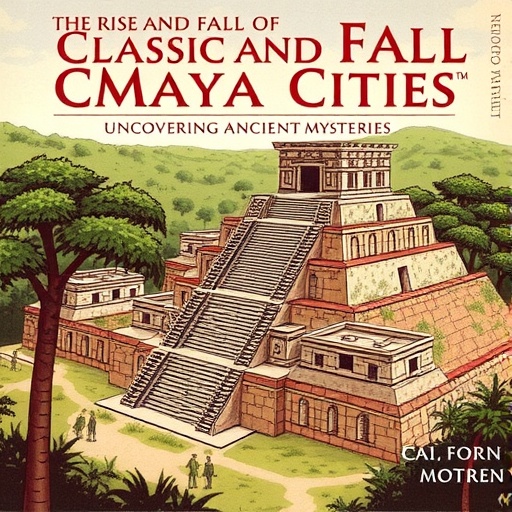The dynamics of urban life—the magnetic pull of cities and the concurrent waves of departure—have intrigued scholars and laypeople alike for centuries. Today’s fluctuating urban populations hinge on a confluence of factors such as economic opportunities, lifestyle preferences, environmental quality, and occasional global disruptions like pandemics. Yet, this ebb and flow is not a phenomenon confined to modernity; the pattern is steeped in deep antiquity, rooted in the earliest urban experiments across human history.
At the dawn of civilization, cities emerged as dense hubs amidst widespread agrarian societies. These societies, primarily reliant on extensive land use for agriculture, typically favored dispersed settlement patterns to optimize proximity to their fields and reduce the burden of transport. The decision to concentrate populations into urban centers—despite the glaring costs of crowding, increased disease transmission, land scarcity, and social stratification—poses a historical paradox that has long captivated researchers.
Douglas Kennett, an archaeologist at the University of California, Santa Barbara, has dedicated years to unpacking this enduring conundrum through his investigation of the Classic Maya civilization. His recent collaborative study, published in the Proceedings of the National Academy of Sciences, advances our understanding by applying principles from population ecology—a branch of science traditionally employed to analyze animal populations—to the human condition during this ancient epoch.
By integrating archaeological data amassed since 2012 regarding population dynamics, conflict episodes, and agricultural infrastructure investments with newly available high-resolution paleoclimatic records, Kennett and his colleagues devised a computational model capable of elucidating the interplay of variables driving urbanization and its ultimate decline. The model frames Classic Maya cities as living systems, where climate pressures, warfare, and the scale of economic activity coevolved, fostering complex social structures such as patron-client relationships and systemic inequalities.
One illuminating insight from their model is the recognition that the rise of Classic Maya urban centers was not attributable to singular causes but rather to the synergistic effects of recurrent climate downturns, escalating intergroup conflict, and the efficiencies garnered from large-scale investments in agricultural infrastructure. This triad of factors created conditions under which clustering provided advantages that outweighed the inherent costs of urban life, sustaining population growth and elaborate urban complexity.
Conversely, the decline of these cities—often dramatized as a result of prolonged drought alone—is revealed to be far more intricate. The model indicates that deurbanization occurred during phases of climatic amelioration rather than environmental degradation. As the environment near urban cores deteriorated, the improving conditions in rural areas offered incentives for dispersion, enabling individuals and groups to reclaim autonomy and reduce the liabilities of urban dependency.
This nuanced portrayal refines and synthesizes previously disparate theories. Environmental stress, warfare, and economic rationale are not mutually exclusive explanations but interlinked drivers within a dynamic system. The Classic Maya experience exemplifies how ancient populations negotiated trade-offs between the benefits of social aggregation and the constraints imposed by ecological and sociopolitical circumstances.
Importantly, the framework developed through this research extends its relevance beyond ancient history. It establishes universal principles applicable to understanding how human populations aggregate and disperse—a matter critical for contemporary urban planning and resilience in the face of global environmental and social change. The study opens pathways for employing ecological models to anticipate urban trajectories and manage resource allocation more adeptly in the present day.
Kennett emphasizes that this insight transforms our perception of the Maya “collapse,” discouraging simplistic attributions to drought and instead inviting investigation into the interaction of climatic variables and sociopolitical strategies. The work underscores the sophisticated adaptability of ancient societies and their capacity to respond to multifaceted challenges through infrastructural innovation and social organization.
Moreover, the study highlights the paradox faced by agrarian-based economies: the tension between the incentives for population dispersal to maximize land use and the countervailing forces promoting urban concentration for economic and defensive benefits. It is within this tension that the Classic Maya forged their urban landscapes, negotiating survival and prosperity through balancing ecological constraints and social ambitions.
Through advancements in computational modeling, the researchers achieved a resolution unattainable with earlier methodological approaches, allowing for the quantification and temporal mapping of population fluctuations, conflict intensity, and infrastructural investment trends against precise climatic backdrops. This interdisciplinary melding marks a significant leap in archaeological science and population ecology integration.
As urban centers worldwide grapple with the implications of climate change, resource scarcity, and social inequities, insights gleaned from ancient systems resonate strongly, affirming that the fate of cities hinges on a constellation of intertwined factors. Recognizing this complexity can inform sustainable urban development strategies today and, critically, help circumvent the pitfalls that led to the decline of historical metropolises.
In sum, the research led by Douglas Kennett and collaborators elucidates a sophisticated, dynamic interplay of climate, conflict, and economies of scale as the driving forces behind the archetypal rise and fall of Classic Maya cities. Their work not only resolves long-standing debates in archaeology but also contributes vital knowledge with enduring implications for urbanism across millennia.
Subject of Research: Urbanization processes in Classic Maya cities through population ecology modeling
Article Title: Modeling the rise and demise of Classic Maya cities: Climate, conflict, and economies of scale
News Publication Date: 6-Oct-2025
Web References:
https://doi.org/10.1073/pnas.2512325122
Keywords: Archaeology, Archaeological periods, Archaeological sites, Historical archaeology, Cultural anthropology, Human behavior




